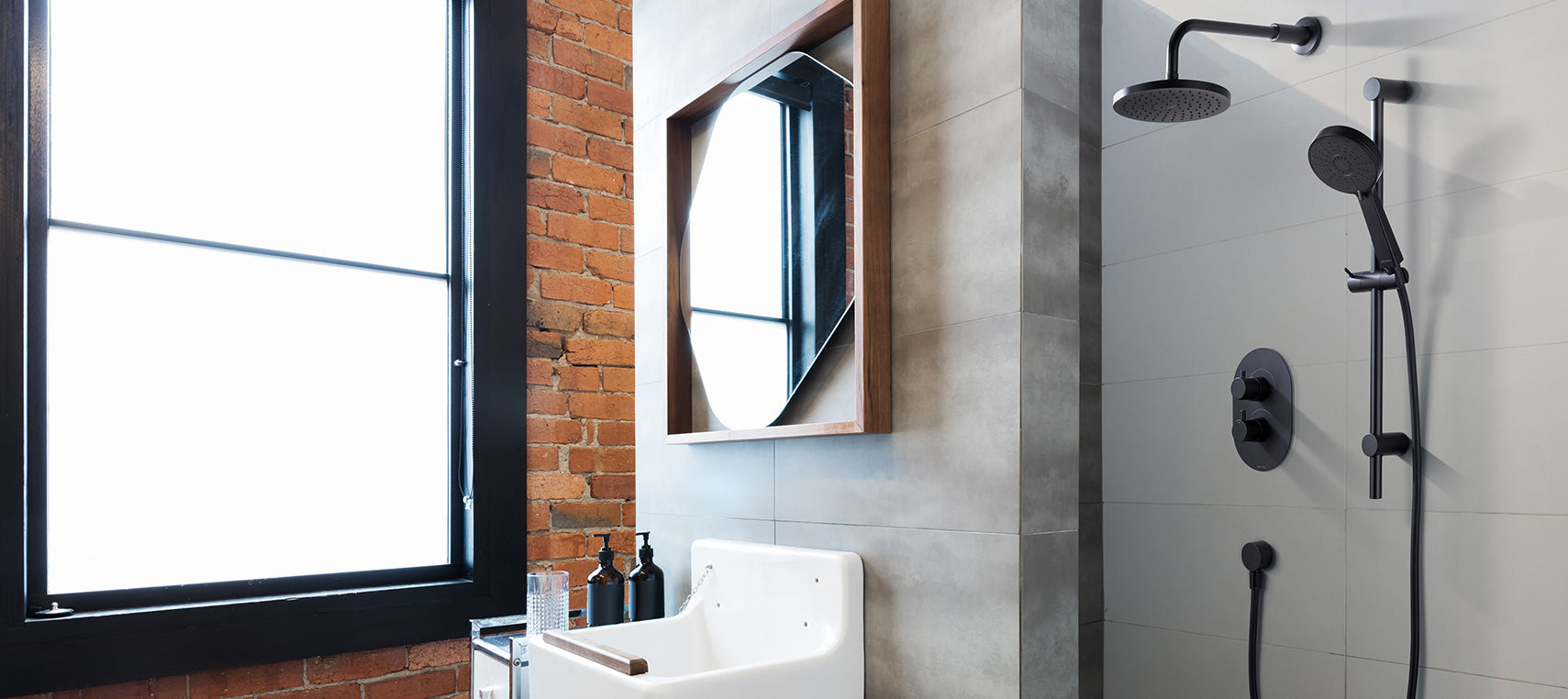
How to Clean Black Bathroom Taps, Fillers and Showers
Take a look at social media or browse bathroom showrooms and brochures and you’ll notice a new bathroom design trend has come into fashion. Over the last couple of years, black bathroom taps and brassware have become increasingly popular.
Despite looking sleek, stylish and modern, black bathroom taps need a slightly different approach to cleaning to keep them looking good, unlike the more traditional metallic finishes that we’ve been used to for our bath and basin taps.
If you mistakenly use a heavy chemical cleaning product, your black taps could be damaged and not the beautiful dark noir matt that they used to be!
Here are some tips on how to clean black bathroom taps effectively and safely.
WHY IS CLEANING BLACK TAPS DIFFERENT?
If you compare black bathroom taps with their more common metallic counterparts you might notice a couple of things.
Firstly, and obviously, the colour is different, but secondly, black taps are matt, rather than bright and shiny. Black taps are designed to absorb light instead of reflect it, and that gives them their matt, total black, finish.
The process required to create this matt black finish is different to other tap finishes and it’s this process which makes black taps more sensitive and therefore susceptible to damage if you accidentally use the wrong product.
Manufacturers use different processes to create the stunning black matt effect, but the most common are electroplating and PVD.
Electroplating
In very simplistic terms, electroplating involves taking a water-based paint solution and using an electric current to convert it into a very thin coating. Although this method is durable and helps your black bath and basin taps stand up to the wear and tear of regular usage, you do still need to take extra care when cleaning.
PVD – Physical Vapour Deposition
PVD involves using a vacuum to add a layer of thin film across the surface of the metal. It is thought that this process is more effective than electroplating and creates a more robust and resilient matt black finish. For this reason, it’s become more popular than electroplating.
BLACK TAP WEAR AND TEAR
Both the processes we mentioned above are improving all the time, but matt black bath taps still require care and consideration when it comes to cleaning. Use of harsh chemical cleaners and strong disinfectants will damage them.
To protect your beautiful black taps from becoming damaged over time, it’s important to know how to clean black bathroom taps properly.
HOW DO YOU CLEAN BLACK BATHROOM TAPS?
The best way of cleaning black bathroom taps is to regularly use warm water and a soft micro-fibre cloth and to rub the tap gently.
Don’t use harsh chemicals, disinfectants or cloths or scourers that have a scratchy feel.
O-RING STAINING
Over time, you might notice some grime, grease and scale build up around the base of the tap. Again, use a soft cloth and warm soapy water to soften and dislodge this.
If this doesn’t work, contact the manufacturers for advice.
CAN BLACK TAPS SCRATCH?
Black bathroom taps can be scratched if you run something sharp along them. A common example of this could be when we accidently scratch the matt surface with a ring. Always try to be as careful as possible to minimise any scratches.
DOES HARD WATER MAKE A DIFFERENCE TO BLACK TAPS?
If you live in a hard water area, you’ll probably find you have to wipe and clean your black bathroom taps more often due to the increased limescale. This limescale is a white chalky residue that’s more visible on matt black surfaces.
OTHER BLACK BRASSWARE
If you’ve chosen black tapware then you might also have chosen other black brassware including shower handsets, freestanding bath taps and other black fixtures and fittings.
Take extra care of these and use the same cleaning methods and you can preserve the quality and look of your beautiful black taps for as long as possible!

